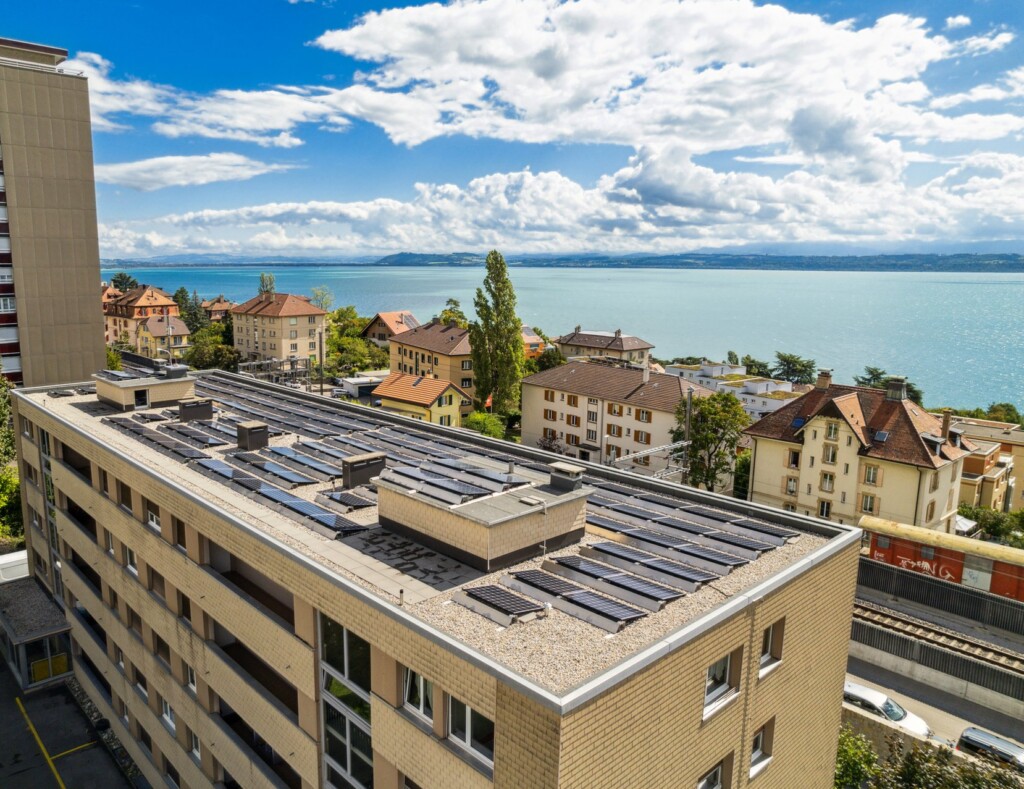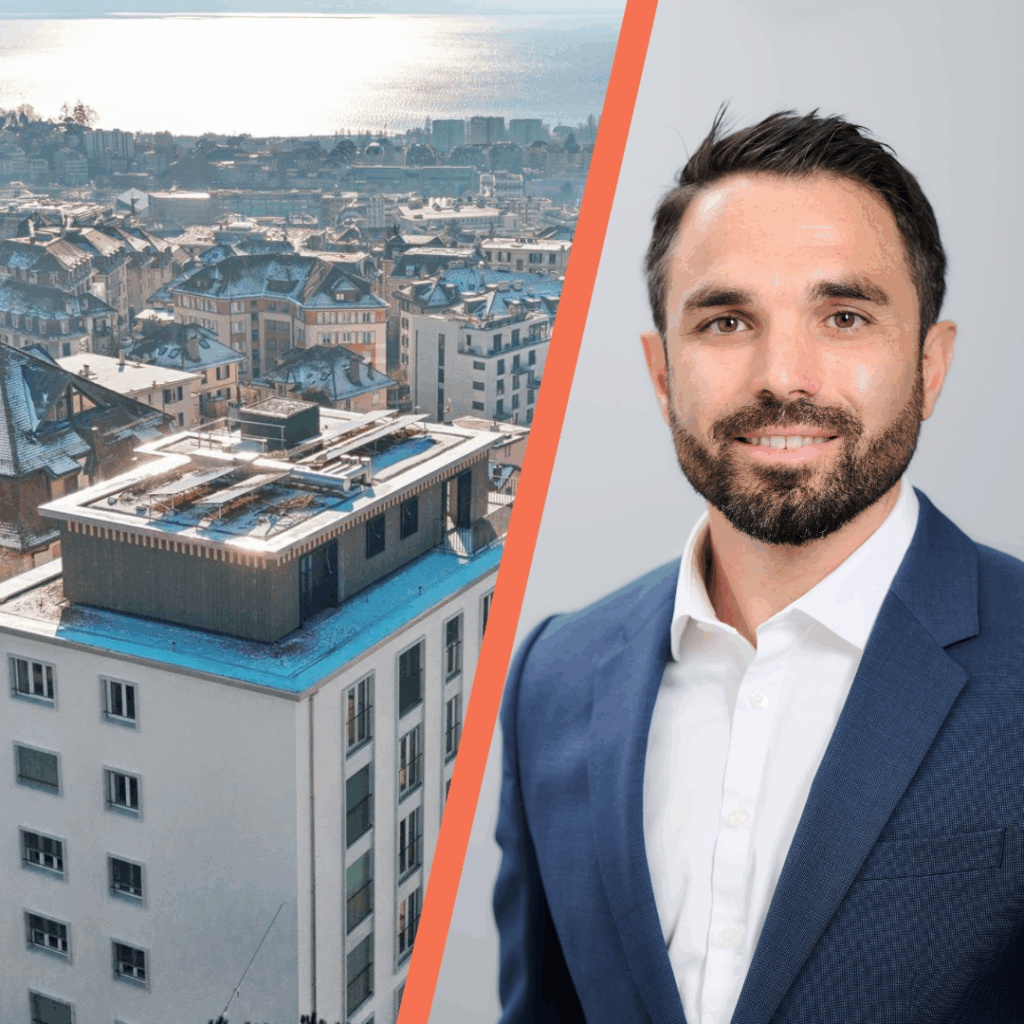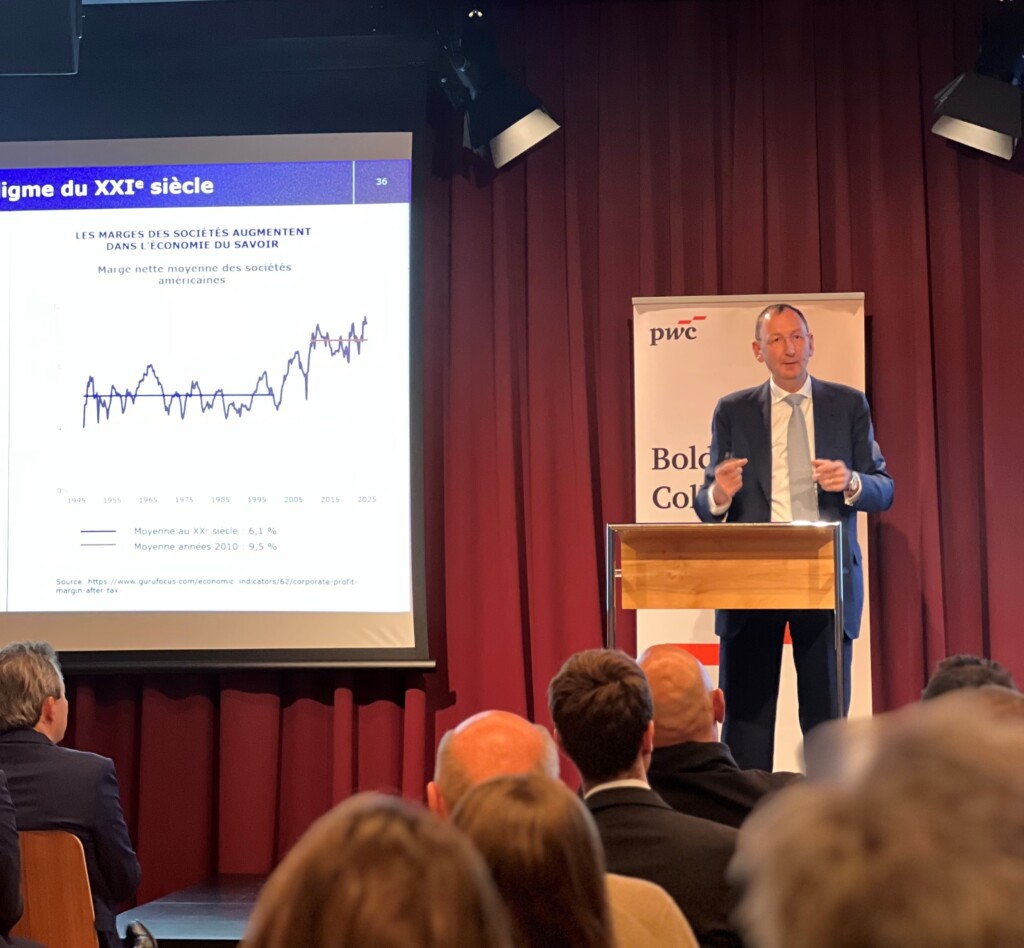
Diego Reyes, Senior Fund Manager
The Dominicé Swiss Property Fund (DSPF) is not a sustainable fund in the regulatory sense, and does not present itself as such. Yet since 2021, Dominicé has voluntarily initiated the integration of environmental indicators into the management of its listed real estate portfolio. A pragmatic and gradual approach, driven by the conviction that sustainability and performance can go hand in hand.
Diego Reyes, Senior Fund Manager, looks back on the key steps of this transformation—balancing operational demands and long-term ambition—with the support of strategic partner Signa-Terre.
You initiated an ESG shift in 2021. What was your first priority?
It actually came quite naturally. We weren’t trying to tick a box or respond to market expectations. We simply needed to understand the true status of our portfolio in terms of consumption, energy performance, carbon emissions, and so on. And for that, we needed data. In 2021, we entered a partnership with Signa-Terre, which enabled us to reconstruct the energy consumption data (electricity, heat, water, CO₂ emissions) across the entire portfolio, including retroactive data from 2020.
This information was then integrated into the ImmoData Pro platform and modeled for each property. It gave us a clear view of performance levels, optimization opportunities, and above all, the investments needed to reduce emissions or improve energy efficiency.
In 2021, we entered a partnership with Signa-Terre, which enabled us to reconstruct the energy consumption data (electricity, heat, water, CO₂ emissions) across the entire portfolio, including retroactive data from 2020.
Once the data was consolidated, how did you build your strategy?
We first wanted to understand what mattered to our stakeholders. So, we sent an ESG questionnaire to both our private and institutional investors. The results revealed a stark contrast: institutional investors see ESG integration as strategic, whereas private investors are generally less sensitive to these aspects.
Based on this, we developed a materiality matrix. This was not just a theoretical exercise—we aligned it with our financial flows, investment margins, and development timeline. The outcome was what we internally call a “stepwise strategy”—not a straight line, but a series of prioritized, realistic actions tailored to on-the-ground realities.
What concrete actions have been implemented in the portfolio?
Every new acquisition—about 10 buildings per year, totaling CHF 50 to 100 million annually—is immediately assessed under our sustainable integration approach. Each building is analyzed through multiple lenses: energy performance, renovation potential, maintenance status, etc. We created a prioritization matrix by asset (Priority 1, 2, or 3), which guides our investments in a structured way.
Read our sustainability report here
Has your strategy been formalized in regulatory terms?
Yes. In June 2024, we amended the fund contract to formally include our integration approach, as validated by FINMA. This means we take sustainability issues into account in our investment analysis, though DSPF does not position itself as a sustainable fund. We want to avoid any risk of greenwashing, and we stick to an approach based on facts, data, and tangible results.
We want to avoid any risk of greenwashing, and we stick to an approach based on facts, data, and tangible results.
You also joined the GRESB benchmark. Why?
Today, GRESB is the reference benchmark for listed real estate in Europe. In 2024, we received our first star. Our target is clear: three stars in 2025, four in 2026. This is not a marketing goal—it’s a measurement tool that allows us to fine-tune our reporting and operational priorities.
We also began working with Pom+ to support this implementation phase. Their expertise complements that of Signa-Terre, which remains our partner for all technical aspects.
What role do tenants play in your ESG approach?
Tenants play a significant role. In 2023, we conducted a satisfaction survey of 3,500 individuals, which led to concrete actions regarding lighting, concierge services, and facility management. In June 2024, we rolled out green leases across the portfolio, requiring new tenants to adopt responsible practices. We also launched a collaboration with Neovac AG to install individual heat meters in all our properties with hydraulic radiators.
How do you see the regulatory environment evolving in Switzerland?
We’re making progress, but there is no unified standard yet, as there is in the European Union. Initiatives from AMAS and REIDA are heading in the right direction, though they still rely on self-regulation. At Dominicé, we’ve chosen to be proactive. In 2023, we published our environmental indicators following AMAS guidelines. This allowed us to test our tools and introduced these new requirements to our real estate teams.
You mentioned avoiding chasing labels. Is this also a way to avoid greenwashing?
Yes, absolutely. There is a real reputational risk in this space, especially when claims are made without action. We prefer to set clear milestones—being regulation-ready, transparent with our investors, and precise in our reporting. We don’t claim to do it all. Transition is a journey, not a status.
We prefer to set clear milestones—being regulation-ready, transparent with our investors, and precise in our reporting. We don’t claim to do it all. Transition is a journey, not a status
What are your next priorities?
The year 2025 will be pivotal, especially with the GRESB assessment. More broadly, we continue to refine our path. We monitor our emission targets, consumption levels, and update the strategy annually in line with acquisitions. Above all, we keep investing where the real impact lies: in renovations. That’s where everything happens.
Our top priority is continuous improvement. By 2030, we aim to measure the real impact of our integration strategy on the performance and resilience of the portfolio.
Read more here: La Borde 17 in Lausanne: A Compelling Case for Demolition and Reconstruction | Dominicé


